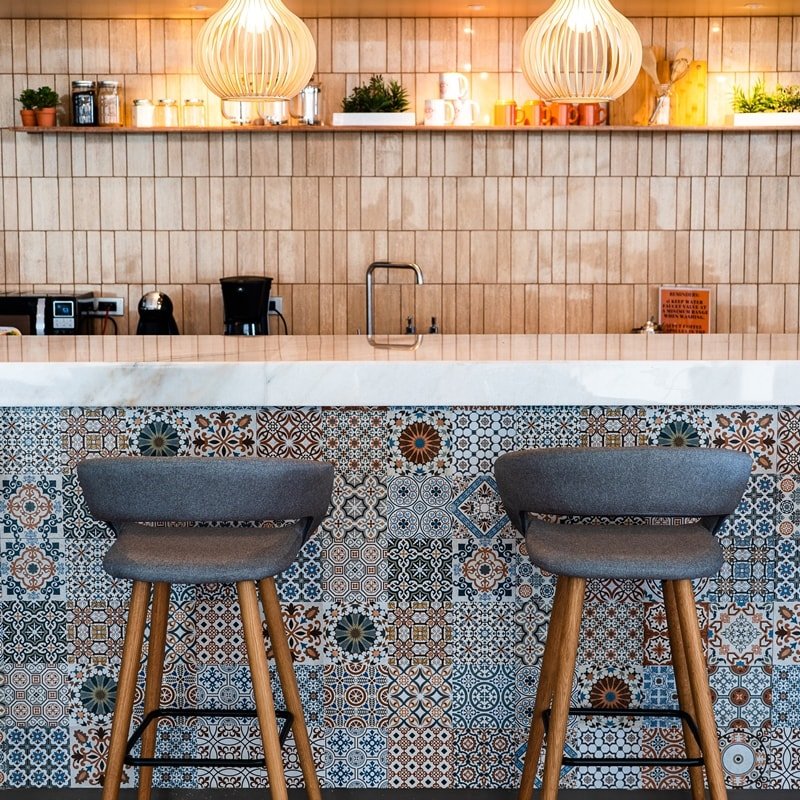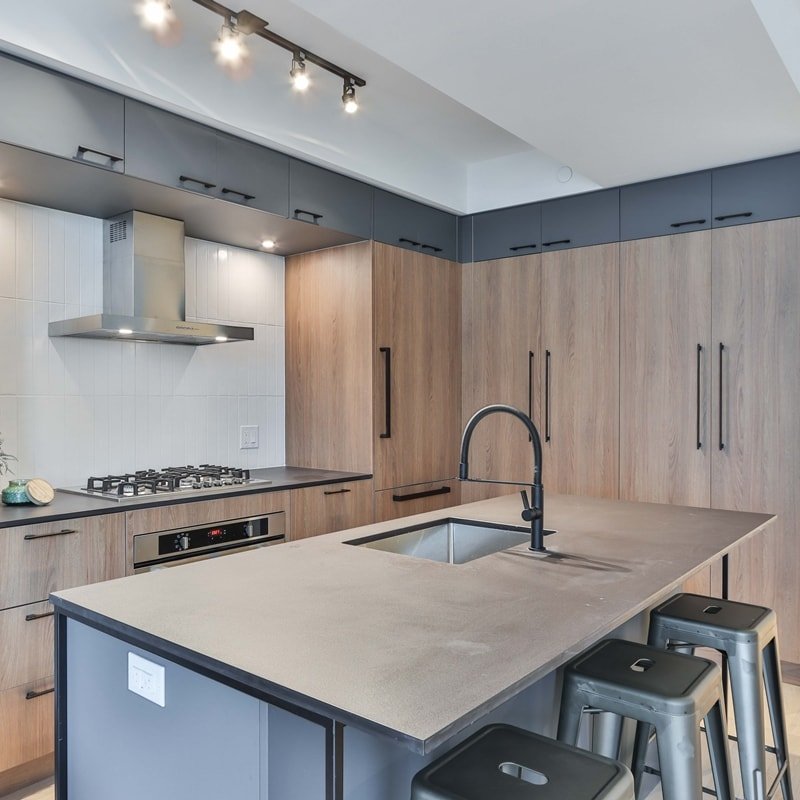As we all know, quartz stone has high density and strong hardness, so it has excellent scratch resistance and stain resistance, no scratches, no penetration, stain resistance, corrosion resistance, high-temperature resistance, green environmental protection, and direct contact with food. Kitchen, bar, and other countertops.
At the same time, quartz stone has slight thermal expansion and contraction, and cracks will occur when it cannot withstand the internal stress caused by thermal expansion and contraction and is subjected to severe external impact.
Generally speaking, there are several situations for cracking quartz stone countertops:
1. The center part of the countertop is cracked: under high temperature, impact by an external force, uneven cabinet or backing plate, internal damage to the plate, etc.;
2. Cracks at the corners: the countertop is too tight against the wall without shrinkage joints, the height, and height between the two cabinets are uneven or not leveled, the countertop shrinks unevenly due to external impact or temperature changes and cracks;
3. Cracks around the furnace hole: there is no gap between the gas stove and the furnace hole, the furnace hole is not polished smooth, and the surface shrinks unevenly due to external impact or temperature changes and cracks;
4. Cracks around the counter basin: there is no gap between the above counter basin and the basin hole, the basin hole is not polished smooth, and the countertop shrinks unevenly due to external impact or temperature changes and cracks;
5. Cracking of the back retaining water: the cabinet is not flat or the backing plate is not flat;
6. Cracks on the part of the table top connected to the backwater edge: the glue is not firmly bonded;
7. Cracks at the joints of the countertops: When the installation workers are jointing, the seams are not aligned, the glue is not evenly applied, or the glue is added to the glue or too much glue is added to make the joints more brittle, and they will crack when they are slightly impacted during use.
Therefore, in order to prevent the quartz stone from breaking and ensure the quality of the countertop, there are a few points to pay attention to before installation:
1. When designing plane splicing, the physical properties of quartz stone can be fully considered to avoid the consequences of joint cracking caused by thermal expansion and contraction or stress concentration. When selecting the splicing position, the force of the plate must be fully considered. Avoid connecting at corners or furnace mouths.
2. When designing the opening position, the opening position should be greater than or equal to 80mm from the edge of the table to prevent cracking of the hole position, and the corner of the opening should maintain a rounded corner with a radius of more than 25mm.
3. When designing the corners of the table, considering the stress concentration, will cause cracks at the corners of the table. Therefore, during processing, all corners should be kept with a radius of more than 25mm.
4. When the countertop is installed, there should be a 2-4mm telescopic gap between it and the wall to avoid cracking of the countertop due to insufficient space for thermal expansion and cold contraction. The maximum distance between the table and the support frame or support plate shall not exceed 600 mm to reduce deformation or even breakage of the table.
5. During daily use, it is also necessary to avoid cracking of the quartz stone countertop caused by some external factors, such as: do not hit the quartz stone countertop with gravity, do not directly contact the extremely high-temperature pot or utensil on the countertop, etc., you can put a layer of the heat insulation layer.










